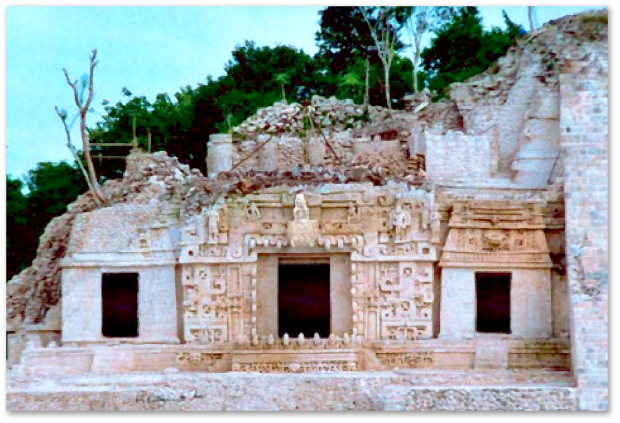
El Palacio real
The building has limestone walls and lime and sand mortar. The walls were decorated with stone reliefs, assembled with each other, and these in turn covered by a thick layer of stucco, made of lime and medium and coarse sand. These materials are very abundant in the region and were extracted from nearby quarries and sascaberas.
The processing of these materials consists of the selection of the best stones to produce lime through the use of high temperature in specialized kilns and the consequent slaking of the quicklime in open-air lime kilns. The selection of sands in the sascaberas made it possible to differentiate stone powders that mixed with lime produce a very resistant and durable concrete. In the case of the façade, the stuccoes were not painted as in other parts of the Acropolis, which showed bright colors derived from the treatment of mineral and vegetable products.
Stucco reliefs are formed with a lime paste (calcium hydroxide) from the calcination of limestone at over 900º C in a kiln. Once calcined, they were “slaked” with water and the resulting paste was mixed with fine, medium and coarse sands to form mortars. These mortars were modeled with hands and tools. The fresh mortar pastes usually had stone supports to hold them, attached to the architectural elements (walls, friezes, cornices), many times the “stone souls” were carved in the same shape, design and proportion as the stucco reliefs that covered them. Before drying and setting completely, they were painted with mineral paints suspended in water, or in some other binder (vegetable gums or animal proteins). Once the stucco had set, the color remained fixed on the surface, although they were also left without color, and were polished in the drying process to leave the surface impermeable.


